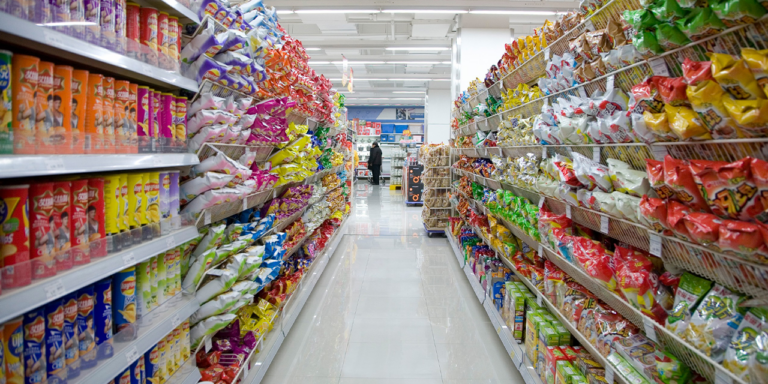A supply chain is always a work in progress. You can optimize it so it’s running as close to perfect as possible and then circumstances change. Even best-maintained processes slip out of alignment and affect your results. As a supply chain professional, you quickly accept that you will always be fine tuning your operations, though sometimes that feels like more and more effort for diminishing returns.
However, there are a number of areas, sometimes overlooked, where you can make a significant difference relatively easily. And in grocery retail, where short shelf-life goods and the risk of spoilage raise the stakes, the impact can be even greater.
In almost every case the biggest factor is the quality of your master data. Your supply chain system is only as good as the data you put in it and cleansing and organizing your master data lays strong foundations for future success. When that’s done, you and the technology can work your magic.
By making sure stock is allocated properly, by selecting the right batch sizes and by ensuring you have set optimal safety stock levels, grocery retailers can avoid unnecessary spoilage, improve availability and serve their customers better.
Here are three key areas where a little extra time and focus can really pay dividends.
Allocations
If your average numbers for your warehouse or distribution center are on-target, but stores keep telling you that they’re getting too much, or too little, or that stock is arriving too late, it may be time to look at your allocations.
- Take spoilage; if your DC is holding stock with a rapidly diminishing shelf life, then allocating it to stores with high inventory turnover increases its chance of being sold within its ‘sell-by’ dates. On the flip side, stores with low inventory turnover should be allocated stock with the longest remaining shelf life to give them the best possible chance of selling it before it spoils.
- Promotions are another area where extra focus and refinement can produce great results. When you take factors such as available shelf space in each store, stock on hand and historical sales data into account, you can forecast promotional quantities to be allocated to each store accordingly. Accurate forecasts help you to allocate your quantities and minimizes both the risk of losing sales and of dead stock at the end of the promotion.
- Lastly, when demand from stores exceeds available stock at the DC, store balance data and sales forecasts can be used to automatically allocate stock proportionately based on the demand of every individual store, so stock levels will reduce evenly across the chain avoiding out of stocks in some places and excess stock in others.
Batch Sizes
Getting batch sizes right can cut costs in the three areas where retailers spend most– space, staff and stock. The interplay between demand, allocation, space and staffing levels is significant and addressing them together can achieve efficiencies beyond what’s possible addressing them separately. We call this holistic approach Unified Retail Planning.
Getting batch sizes right can also be tricky – large batch sizes generally require more shelf space and can increase the size of the back-room inventory as well as your average inventory levels but on the other hand, reduce store shelf replenishment and transportation costs. Determining the right batch size, while balancing these costs, is often a little challenging but can have a significant impact on the bottom line.
Here are some tips to get you started:
- Match your batch sizes to shelf space. The ideal is that one full batch (plus safety stock) fills the available shelf space. Getting the whole batch on the shelf reduces the need for further stacking later. If the batch is too large, avoid the temptation to simply increase the shelf space to accommodate it. Instead, ask the supplier if smaller batch sizes are available and pick the one that best matches the space.
- It’s also important to compare the batch size to the minimum requested order size. If stores are ordering multiple batches the batches are likely too small, increasing picking and handling costs. The closer you can get to one delivery = one batch = total demand for the period between deliveries the better.
- With perishables, batch sizes become critical. If the minimum batch of e.g. avocados is 15 Kg and you can only sell 10 Kg before they go bad you know you have a problem. Try comparing the average daily demand to the batch size and the shelf life – it should be possible to sell a full batch size before it expires.
- In some case you might benefit from multiple batch sizes. By looking at the previous order quantities from each store you might identify distinct peaks with significant differences between them. For example, some stores might regularly place orders for 2,000 units, some for only 100 units and the rest something in between. This could indicate that you need one small batch size (around 100 units) and one larger batch size (around 2,000 units). By having multiple batch sizes, you can reduce handling costs and possibly even create substitutes for out-of-stock products at the warehouse. However, in most cases, it will also increase the inventory level as safety stock needs to be carried for both batch sizes.
Safety Stocks and Safety Lead Times
Safety settings are there to protect you against lost sales. Too low and you could end up losing sales with empty shelves, too high and you could have excess stock, poor inventory turnover and perishable items that could spoil.
Both safety stocks and safety lead times should reflect the degree of uncertainty as exactly as possible (and also the importance of the product – Will anyone care if you run out? Will people substitute happily or reluctantly?). So, to get safety stock and safety lead times right here are a few tips:
- Be specific, update frequently. Safety stocks should reflect possible deviations from average sales, likewise, safety lead times should accommodate possible delays in delivery times. These are not constants. Sales spikes in December may be very different from those in January, likewise, delivery times may be far less predictable when there’s heavy snow compared to during the summer. Updating parameters weekly (and in response to specific events like weather anomalies or local sporting events) and at the most granular level possible (i.e. store/SKU) let you fine-tune inventory levels to avoid running out of stock or overstocking. If that sounds like a lot of work, remember that automation is your friend and exception alerts your backup.
- Just as sales spikes shift during the year, they also shift during the week. Setting day-specific safety stocks is therefore important. Some products (e.g. steaks, wine) sell more during the weekend than other days of the week. This often means that the uncertainty of how much is sold differs between each day of the week. Therefore, it can be beneficial to have day-specific (or week- and weekend-specific) safety stock levels to protect against higher uncertainty levels when needed and lower levels when demand is more predictable.
- By setting safety stock levels for perishables so that they reflect shelf life, you’re also balancing the impact of stock-outs against the risk of spoilage (overstocking ambient goods is a nuisance, overstocking perishables is a financial liability). You need to be aware of the quantities of any given SKU in any given store that may exceed their sell-by dates during the replenishment period. Normal safety stock calculations do not take this into consideration and we caution against calculating safety stocks without taking sell-by dates into account. However, you also need to be aware that setting safety stock levels too high for perishable products immediately increases the risk of spoilage as it will reduce overall inventory turnover. In such cases, referencing projected spoilage against projected availability is exceptionally useful for finding just the right safety stock levels for these types of products.
RELEX has worked with grocers across Europe and North America and we’ve collected much of what we’ve learned into a best practice guide: Best Practices for Managing Grocery Retail Supply Chains. In the guide, we highlight key approaches for increasing both responsiveness and efficiency in grocery supply chains.




